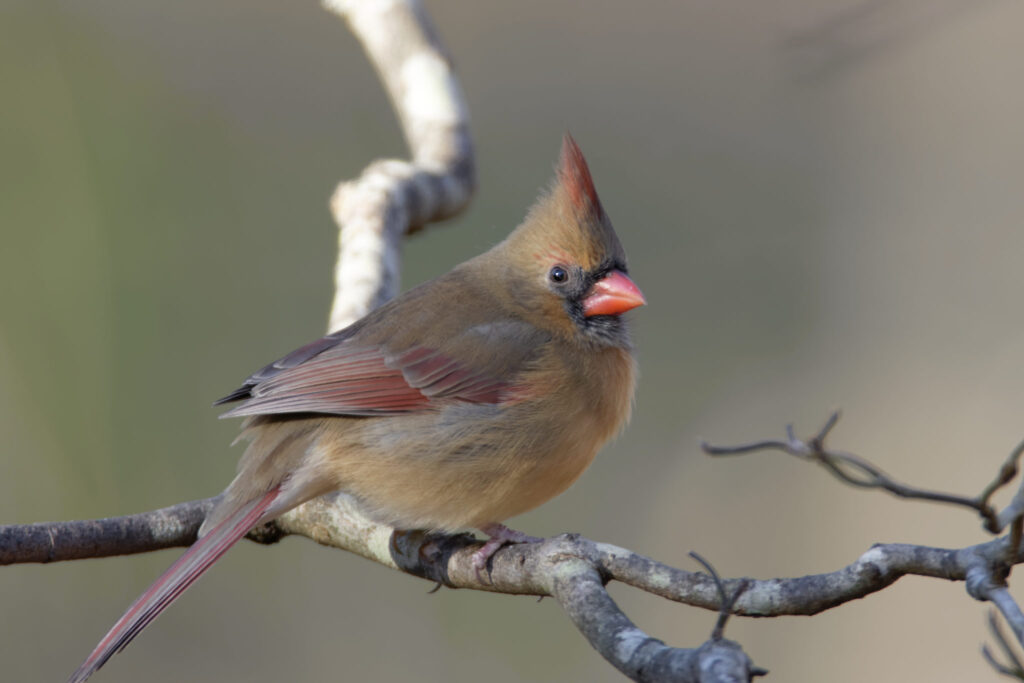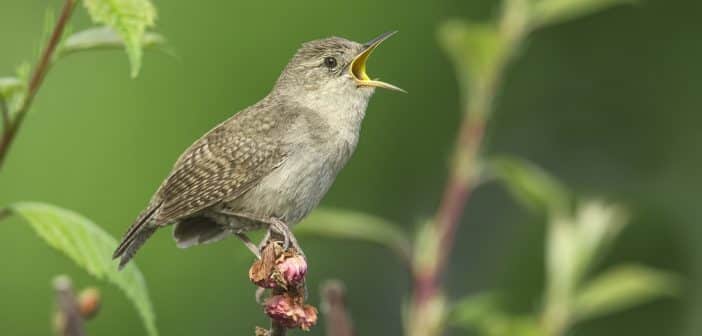In the spring, when love is in the air for our feathered friends, they can’t just swipe right on “bird-match.com” to find a soulfeather. Why songbirds sing is to find a mate. But, how? After all, there are significant sight barriers—towering trees, lush plants, rolling hills, and all manner of human structures. Even songbirds1 perched in the same densely foliated tree may be unable to spot each other without announcing their location. It’s also a way of showing their suitability as a mate: “I’m over here, and I’m healthy—notice how strong my voice and melodic my song.” Once drawn within sight of each other, they can get a good look at potential mates and make important decisions.
Not just a boys club
It was always supposed that only males sing, but recent research2 has turned that on its head. It turns out that a surprising number of tuneful females also chime in on the chorus of males.

Among female singers are Northern Cardinals, Cardinalis cardinalis (Rick from Georgia / Flickr; CC BY 2.0)
Birds may sing at any time of the day, but they tend to be early birds, rising ahead of the sun and singing their distinctive tunes as early as 4 a.m. If you also happen to be an early bird, you may have noticed that the morning songs are louder, livelier, and more frequent. Scientists have a few theories about that.3
They call it the dawn chorus and speculate that birds sing then because light levels are too low for foraging—basically, they might as well sing. Or that early, strong singing signals to other birds about the vitality and strength of the singer—”I was healthy enough to survive the night.” Another theory is that early morning is when birds can best hear each other without competition from the roar of auto traffic, the growl of lawnmowers, and the scream of loud equipment and power tools, particularly in cities.
Most songbirds tuck themselves in at night, but a few daytime singers will continue after sundown. American Robins, Northern Whip-poor-wills (Antrostomus vociferous), and Northern Mockingbirds (Mimus polyglottos) are among them. Nightingales (Luscinia megarhynchos) sing mostly at night.
| 1 Songbirds belong to the order Passeriformes. What distinguishes them most isn’t their songs but the arrangement of their toes. You can learn more about them here. |
| 2 Marc Devokaitis, “Many female birds sing beautiful songs—all we have to do is listen,” April 30, 2018, AllAboutBirds.org. |
| 3 Paul E. Pickett, “Why Do Birds Sing So Early in the Morning?”, WBU.com. |
More reading:
Birds gone bald – what’s up with that?
No spring in the step of hungry spring birds
Answers to important questions about birds
Add these special trees for birds






